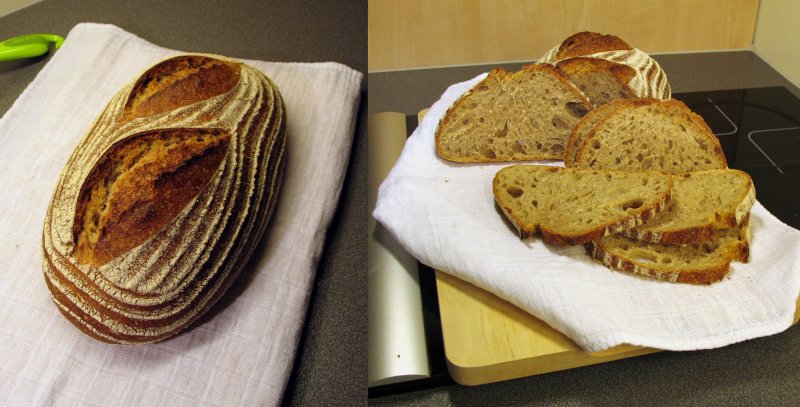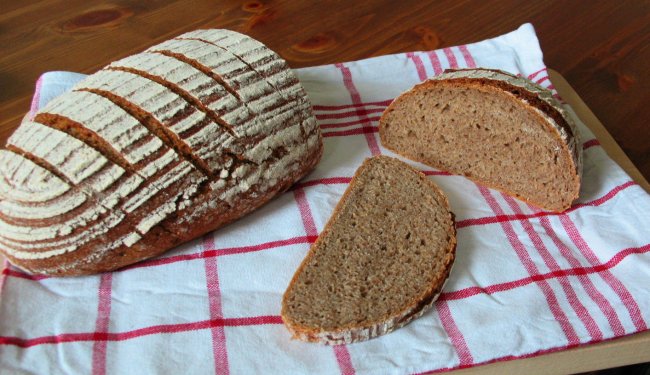hansjoakim's blog
A new rye starter and a caramel cake
My trusted sourdough starter is a firm white one, that I've had for just under a year now. We got off to a shaky start, but it's become amazingly reliable and flexible. It seems to respond very quickly to feedings and has a great leavening capacity. My only minor complaint would be that it's very mild in flavour, and imparts only a slight tanginess to the loaves. So, as an experiment, I decided to start a new rye starter from scratch, and see if this would result in more sour breads.
Fruit and nut levain, Paris-Brest and Florentina surprise
I loved the deep wheaty taste of the whole-wheat levain that I posted about last time, and I feel the preferment itself (a wet whole-wheat preferment) added a tangy, earthy flavour to the loaf. It'll be interesting to experiment with different flours in future preferments, as it could be an easy way to "extract" more of the flavour and aroma characteristics of the flour that is used.
Whole-wheat levain and comparing crumbs
Hi all,
This is a brief follow-up to my last post about Hamelman's whole-wheat pain au levain. I was very pleased with the creamy, light crumb of the loaf and wondered how an increase in whole-wheat flour would affect it. To gauge things, I decided to bake the whole-wheat levain from the same book, thereby doubling the whole-grain flour content.
Bäcker Süpke's Joghurtbrot
Wolfgang Süpke is a German baker whose blog, Bäcker Süpke's Welt, I've been trying to keep up with. In the blog, Bäcker Süpke has most generously posted several recipes for some of the mouthwatering loaves his bakery makes.
Spelt loaf, Herbstzauber and raspberry cake
After rye, I think spelt is my favourite flour to work and bake with. Even though it's closely related to wheat, spelt behaves remarkably different in baking. Whenever I bake mostly white spelt loaves, I opt for a 30 minute autolyse before mixing the final dough. After the autolyse, salt, levain and yeast (if using) are quickly incorporated in the dough. The mixing times tend to be extremely short - just a couple of minutes on first speed is often all that's required. I usually do two or sometimes three folds during bulk fermentation.
Schwarzbrot and Le Fraisier (updated)
There are a couple of things you can do with stale bread. Loaves that are past their prime can still be enjoyed for toast or paninis. Dried slices of lighter bread make for awesome croûtons. Not too spoilt breadcrumbs go well in stuffings or even in biscottis. Sourdough leavened pain de campagne is an awesome choice for putting in fishcakes. If you're really adventurous, hearty rye loaves mixed with rye starter, molasses, water and raisins can be made into kvas.
A rye loaf and le Macs
It's been a while since I last tried one of Hamelman's rye loaves, so I pulled his book from the shelf and started browsing chapter 6. I have baked quite a few of his rye loaves before, but for some reason, his 70% rye with whole wheat and a rye chops soaker has escaped me up until now. The last couple of rye loaves I've baked, have been from doughs that I've composed on my own, and there's always some winging going on with regards to proper hydration and fermentation times. With Hamelman, it's safe to let one's guard down and simply roll along with his detailed directions.

